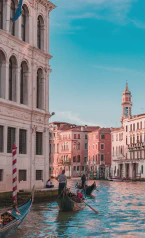Top 10 Must-Visit Global Scuba Diving Spots

Revealing the Deep-Sea Wonders: Top 10 Scuba Diving Destinations Around the World
The majority of our planet is an aquatic tapestry of wonders hidden beneath the waves. There are countless unique and captivating destinations that beckon to scuba enthusiasts, providing extraordinary underwater spectacles. Today, we’ll venture through my top 10 picks, revealing an array of icy waters, tropical paradises, and fascinating marine life that make these places some of the most rewarding scuba diving spots around the world.
The Icy Depths of Iceland’s Silfra
Contrary to what you might imagine about scuba diving, one of the most exceptional spots doesn’t lie in tropical waters but rather in the icy heart of Iceland. Nestled within Thingvet Liar National Park, Silfra, a tectonic fissure between the North American and Eurasian plates, offers a diving experience like no other. The ice-cold waters offer spectacular clarity, revealing mesmerizing visuals that will leave any diver awe-struck.
Exotic Lifeforms of Indonesia’s Raja Ampat Islands
From icy panoramas, we now dive into the warm hug of Indonesia’s stunning Raja Ampat Islands. Located off the northwest coast of West Papua, these islands are a mecca for divers worldwide. The vibrant underwater realm is home to a plethora of unique marine life, including manta rays, sharks, barracudas, and a kaleidoscope of other underwater lifeforms nestled among the captivating coral gardens.
The Underwater Metropolis of Navy Pier, Western Australia
Australia’s Navy Pier, remarkably close to the shoreline, hosts an impressive concentration of sea life. Considered by many as “the best shore dive on the planet,” this private site offers the opportunity to witness the magnificent ballet of marine life in an undisturbed environment.
Manta Ray Night Dive, Hawaii
Underwater, day and night make a difference, especially when you’re aiming to see certain sea creatures during their active hours. Hawaii offers a unique experience with the Manta Ray night dive. Under the allure of special lights set up to attract plankton (the Manta Ray’s favorite meal), you can witness these gentle giants during their dinner time. It’s an experience to etch into your bucket list.
Cocos Island, Costa Rica
300 miles off the coast of Costa Rica lies the UNESCO World Heritage Site of Cocos Island. This remote haven teems with marlins, dolphins, sailfish, and notably, hammerhead sharks. There’s no better time to visit than between June and November if you’re keen on catching a glimpse of these magnificent creatures. Among the various dive sites off the island, Bajo El Sion’s seamount is lauded as the most rewarding.
Great Blue Hole, Belize
The Belize Barrier Reef Reserve system, another UNESCO World Heritage Site, is home to the awe-inspiring marine sinkhole, the Great Blue Hole. In 2012, the Discovery Channel hailed it as one of the most amazing places on Earth. Expect to encounter an underwater wonderland teeming with creatures like the midnight parrotfish and Caribbean reef shark.
Shark and Yolanda Reef, Egypt
Lying off the Sinai Peninsula near Ras Muhammad National Park, the Shark and Yolanda Reef features an underwater landscape that’s mesmerizingly beautiful, yet bizarre. The seabed, scattered with hundreds of porcelain plumbing fixtures from the wreck of the ship Yolanda, presents a surreal underwater spectacle. The diverse marine life, including turtles, batfish, unicorn fish, and scorpion fish, adds to its appeal.
Red Sea’s SS Thistlegorm, Egypt
The Red Sea is home to the SS Thistlegorm, a World War II merchant navy ship that has become a sought-after dive site. The underwater wreckage serves as a snapshot of history, featuring preserved artifacts like a motorbike and a truck from its ill-fated voyage.
Blue Corner, Republic of Palau
Palau’s Blue Corner is one of the biggest diving hotspots in the world, with around 41,000 divers visiting each year. This location is renowned for its abundance of seawalls, steep drop-offs, and the exhilarating chance to dive among sharks. The strong currents provide a challenge, but overcoming it rewards you with a view of marine life that’s unparalleled.
Sipadan Island, Malaysia
Finally, we reach the tried-and-true legendary destination for our number one pick: Sipadan Island, Malaysia. This island, off Borneo in the Celebes Sea, is famed for its incredible diversity of pelagic wildlife. Expect to see an astonishing variety of sharks, turtles, and massive schools of fish. Made famous years ago by Jacques Cousteau, the island’s allure remains undiminished despite its growing popularity.
Exploring these ten destinations promises an unforgettable immersion into the wonders of the underwater world. Whether you’re a seasoned diver or a beginner, there’s an adventure waiting for you beneath the surface. So gear up, dive in, and prepare to be enchanted by the beauty that awaits.
Conclusion
Hugging the wonders of the deep blue sea, diving beneath the waves, and becoming a transient part of the intricate marine ecosystem, offers an unparalleled adventure. As we stand on the shores of countless countries, it’s humbling to consider that beneath the seemingly infinite expanse of water lies an entirely different world, teeming with life, echoing with untold stories, and brimming with breathtaking landscapes.
Our journey has encompassed the globe, taking us from the chilly, clear waters of Iceland’s Silfra fissure to the warm, vibrant marine life that thrives amidst the coral gardens of Indonesia’s Raja Ampat Islands. We’ve explored the shore-side spectacle of Navy Pier in Australia, witnessed the enchanting nighttime dance of Hawaii’s manta rays, and ventured into the open waters surrounding Costa Rica’s Cocos Island.
We’ve marveled at the daunting depths of Belize’s Great Blue Hole, dove into the captivating and surreal underwater landscapes of Egypt’s Shark and Yolanda Reef, and journeyed back in time, exploring the historical remnants of SS Thistlegorm. We’ve braved the currents of Palau’s Blue Corner and reveled in the rich biodiversity of Malaysia’s Sipadan Island.
As divers, we don’t just observe; we immerse ourselves in these environments, drifting with the currents, floating with the fish, and becoming, if only for a while, inhabitants of these underwater realms. Each dive site, with its unique ecosystem, geological wonders, and marine inhabitants, presents us with a different chapter of Earth’s aquatic narrative. These are not merely destinations; they are experiences that linger long after we have surfaced, taking root in our hearts and nourishing our inherent curiosity about the world that lies beneath the ocean’s surface.
In the grand scope of our planet’s story, humans are but brief visitors to these aquatic realms. Yet, the magic of these experiences can be transformative, subtly altering our perspectives, and fostering a deeper appreciation for our planet’s complexity and interconnectedness. As we continue our journey through life, let’s remember to explore, to wonder, to dive - for it is in these depths that we discover not just the mysteries of the ocean, but also a part of ourselves. Happy diving!
1. What is the best time to dive in the Great Blue Hole, Belize?
The best time to dive in the Great Blue Hole is during Belize’s dry season, which is typically between February and April. During this time, the weather conditions are optimal, providing excellent visibility and a calmer sea surface, making it an ideal time for divers to explore the underwater sinkhole.
2. How does diving in cold waters like Iceland’s Silfra compare to diving in warmer climates?
Diving in cold waters like in Iceland’s Silfra provides a distinctly different experience compared to diving in warmer climates. The primary difference lies in the visibility. The water in Silfra is incredibly clear, allowing divers to see as far as 100 meters, which is much further than most tropical dive sites. However, due to the cold temperatures, you will need to use a drysuit instead of a wetsuit, which may require additional training.
3. What marine life can I expect to see at the Blue Corner in Palau?
The Blue Corner in Palau is teeming with diverse marine life. Divers can expect to see an array of sea creatures, including several species of sharks, barracudas, jacks, tuna, and turtles. The strong currents often bring in large pelagic creatures, making it an excellent spot for viewing big fish.
4. Can beginners scuba dive at the Raja Ampat Islands in Indonesia?
Yes, beginners can certainly scuba dive at the Raja Ampat Islands. While some dive sites are more suitable for experienced divers due to currents and depths, there are numerous spots that are ideal for beginners. Most dive centers in the area offer scuba certification courses, allowing beginners to gain experience and learn necessary skills in a world-class diving destination.
5. Why is the SS Thistlegorm dive site in the Red Sea considered special?
The SS Thistlegorm dive site in the Red Sea is special due to its historical significance and underwater spectacle. The SS Thistlegorm was a British merchant navy ship that sank during World War II. Today, divers can explore the well-preserved wreckage and see the cargo of war supplies, such as trucks and motorbikes, that the ship was carrying. This combination of rich history and marine life makes it a truly unique dive site.


